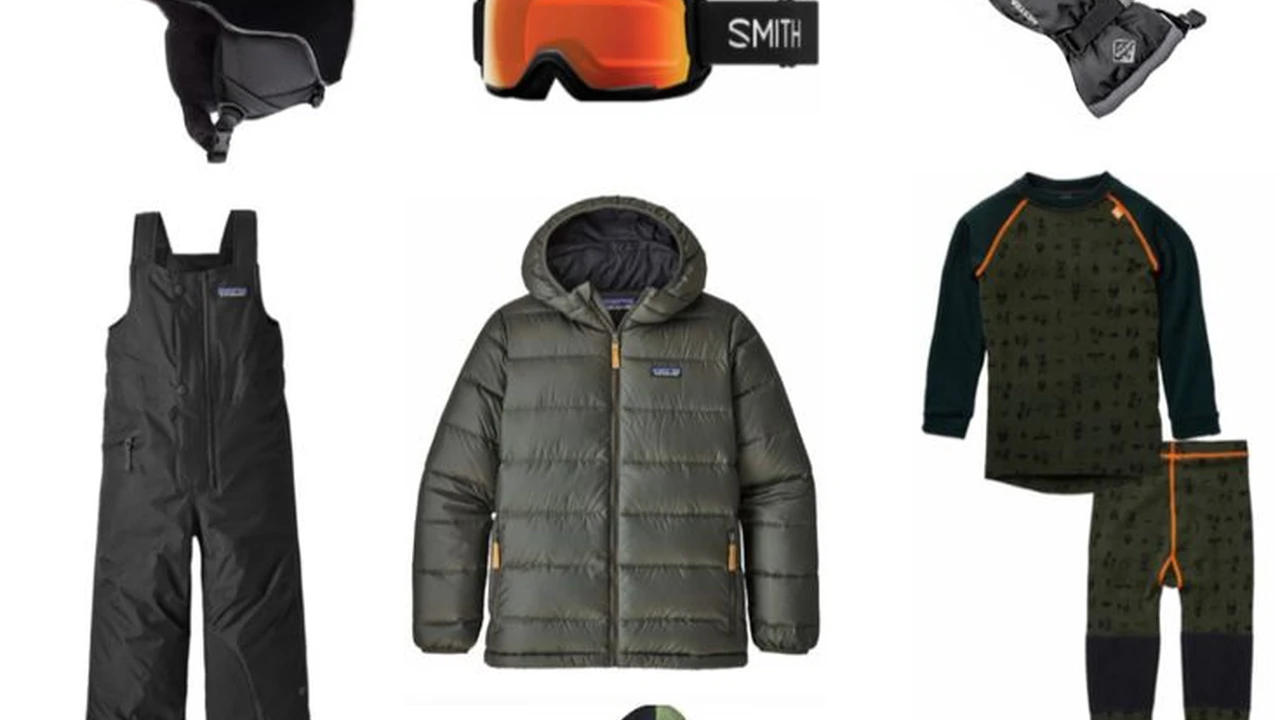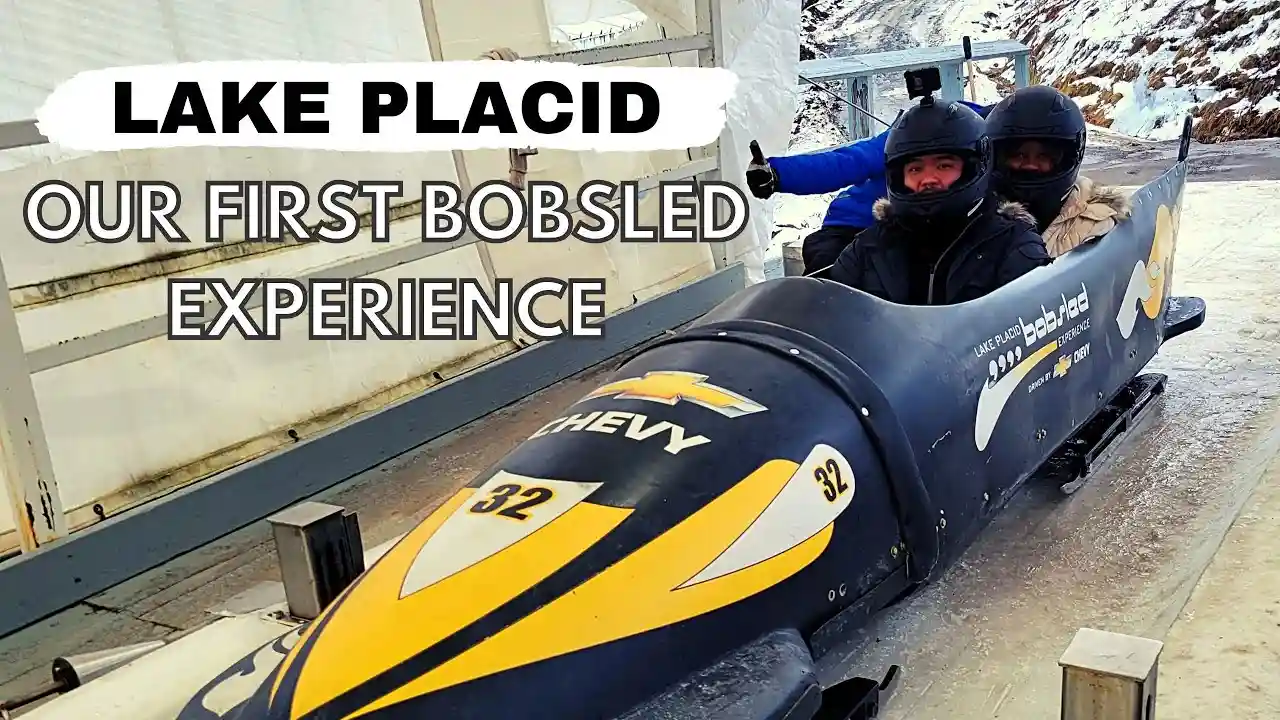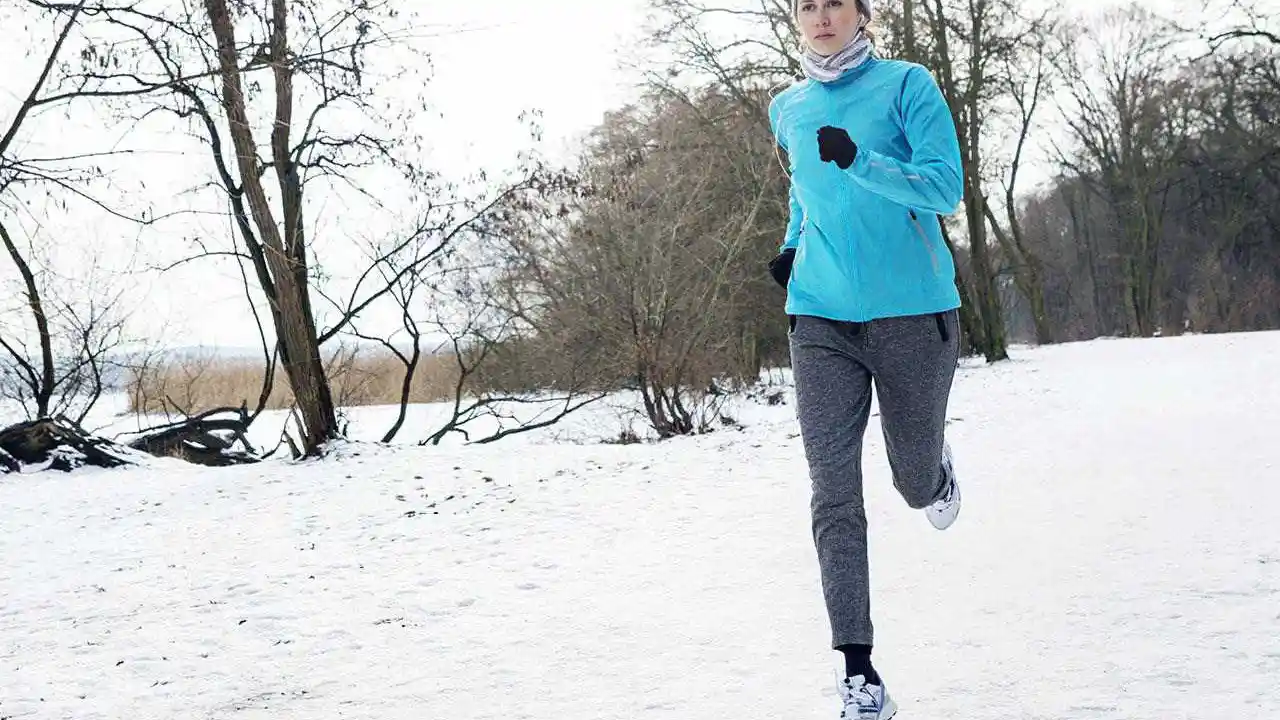
Understand how AI is revolutionizing snow forecasting. More accurate predictions for powder days and resort operations.
AI in Snow Forecasting Revolutionizing Winter Predictions
Hey winter enthusiasts and resort operators! Ever wondered how those incredibly precise snow forecasts come about? It's not just about looking at a weather map anymore. We're talking about a game-changer: Artificial Intelligence (AI) in snow forecasting. This isn't some sci-fi movie plot; it's happening right now, making our powder days more predictable and resort operations smoother than ever. Let's dive deep into how AI is transforming the way we predict snow, what it means for you, and even check out some cool tech and platforms leading the charge.
The Evolution of Snow Forecasting From Traditional Models to AI Powered Insights
For decades, meteorologists have relied on complex numerical weather prediction (NWP) models. These models use mathematical equations to simulate atmospheric processes. They're good, but they have limitations. They struggle with localized microclimates, rapid changes, and the sheer volume of data. Enter AI. Machine learning algorithms, a subset of AI, can process vast amounts of historical and real-time data – think satellite imagery, radar data, ground sensors, and even social media mentions – to identify patterns and make predictions with unprecedented accuracy. This isn't just about predicting if it will snow; it's about predicting how much, where exactly, and when, with a much higher degree of confidence.
How AI Enhances Snow Prediction Accuracy Leveraging Big Data and Machine Learning
So, how does AI actually do this magic? It's all about data and algorithms. Traditional models are deterministic; they follow a set of rules. AI, particularly machine learning, is probabilistic and adaptive. Here’s a breakdown of the key ways AI enhances accuracy:
- Data Ingestion and Analysis: AI systems can ingest and analyze petabytes of data from diverse sources. This includes not just standard meteorological data but also less conventional sources like IoT sensors on mountains, webcams, and even crowd-sourced observations.
- Pattern Recognition: Machine learning algorithms are exceptional at identifying complex, non-linear patterns in data that human meteorologists or traditional models might miss. They can learn from past weather events and their outcomes to predict future ones more accurately.
- Ensemble Forecasting Improvement: AI can optimize ensemble forecasts, which combine predictions from multiple models. By weighting the reliability of different models based on past performance, AI can produce a more robust and accurate overall forecast.
- Nowcasting Capabilities: For short-term, hyper-local predictions (nowcasting), AI excels. It can rapidly process real-time data to provide immediate updates on snowfall rates and intensity, crucial for avalanche warnings or sudden whiteouts.
- Bias Correction and Calibration: AI can learn and correct biases in traditional NWP models, refining their outputs to be more aligned with actual observed conditions.
Key AI Technologies in Snow Forecasting Neural Networks and Predictive Analytics
When we talk about AI, we're often referring to specific technologies. Here are some of the most impactful ones in snow forecasting:
- Neural Networks (NNs): These are algorithms inspired by the human brain, capable of learning from data. Deep learning, a type of neural network with many layers, is particularly powerful for processing complex weather patterns. They can identify subtle atmospheric conditions that lead to heavy snowfall.
- Random Forests and Gradient Boosting: These are ensemble learning methods that combine multiple decision trees to improve prediction accuracy and robustness. They are excellent for handling diverse datasets and identifying important features.
- Support Vector Machines (SVMs): Useful for classification tasks, SVMs can help categorize weather conditions (e.g., light snow, heavy snow, blizzard) based on various input parameters.
- Recurrent Neural Networks (RNNs) and LSTMs: Especially good for sequential data like time series, RNNs and their variants (like Long Short-Term Memory networks) are ideal for predicting how weather patterns evolve over time.
- Computer Vision: AI-powered computer vision can analyze satellite and radar imagery to detect cloud formations, precipitation types, and snow cover in real-time, providing crucial visual data for forecasts.
Benefits for Ski Resorts and Winter Operations Enhanced Safety and Efficiency
For ski resorts, accurate snow forecasting isn't just a luxury; it's a necessity. AI brings a multitude of benefits:
- Optimized Snowmaking: Resorts can precisely time snowmaking operations, saving energy and water by only making snow when conditions are optimal (temperature, humidity).
- Improved Grooming Schedules: Knowing exactly when and how much snow will fall allows grooming teams to plan their routes and timing more efficiently, ensuring perfect corduroy for morning runs.
- Enhanced Avalanche Control: More accurate predictions of snowfall, wind, and temperature changes enable better assessment of avalanche risk, leading to more effective and safer control measures.
- Better Staffing and Resource Allocation: Resorts can anticipate visitor numbers based on snow forecasts, optimizing staffing for lifts, restaurants, and ski patrol.
- Dynamic Pricing Strategies: Some resorts are even exploring dynamic pricing, adjusting lift ticket prices based on predicted snow conditions, maximizing revenue during powder days.
- Marketing and Communication: Accurate forecasts allow resorts to market upcoming powder days effectively, attracting more visitors and enhancing the guest experience.
Benefits for Winter Sports Enthusiasts Planning Your Perfect Powder Day
And for us, the passionate skiers and snowboarders? AI-powered forecasts are a dream come true:
- Guaranteed Powder Days: With higher accuracy, you can plan your trips to coincide with the best snow conditions, maximizing your chances of hitting fresh powder.
- Safer Backcountry Adventures: Backcountry enthusiasts can make more informed decisions about avalanche risk and route planning, significantly enhancing safety.
- Optimized Gear Choices: Knowing the exact conditions (temperature, snow type, wind) helps you choose the right layers, skis/board, and accessories for the day.
- Reduced Travel Hassle: Avoid driving hours only to find slush or icy conditions. AI helps you pick the perfect day and location.
Leading AI Snow Forecasting Platforms and Tools What to Look For
Several companies and research institutions are at the forefront of integrating AI into snow forecasting. While many of these are B2B solutions for resorts, some offer consumer-facing apps or data that power popular weather services. When looking for a good AI-powered snow forecast, here's what to consider and some examples of the types of platforms out there:
1. Weather Underground (IBM Watson AI)
Description: Weather Underground, now part of The Weather Company (an IBM Business), leverages IBM's Watson AI capabilities. Watson processes vast amounts of weather data, including real-time observations from personal weather stations, to provide hyper-local forecasts. For snow, this means more precise predictions for specific neighborhoods or even mountain slopes.
Key Features: Hyper-local forecasts, interactive radar, historical data, crowd-sourced observations. Their 'Snowfall Accumulation' maps are particularly useful.
Use Case: Excellent for general public use, especially for planning a day trip to a local ski hill or understanding snow accumulation in your backyard.
Comparison: More consumer-focused than some specialized platforms, but benefits from IBM's massive data processing power. It's a good baseline for AI-enhanced general weather.
Pricing: Free with ads; premium ad-free subscription available (around $19.99/year).
2. OpenSnow (Specialized Ski Forecasts)
Description: OpenSnow is a prime example of a specialized forecasting service that heavily relies on advanced meteorological models and increasingly incorporates AI/machine learning for refinement. While they don't explicitly detail their AI models, their focus on mountain-specific data and expert analysis suggests sophisticated algorithms are at play to provide highly accurate snow predictions for ski resorts.
Key Features: Daily snow reports, 5-day forecasts, detailed resort-specific data (temperature, wind, snow depth), historical snow data, and expert analysis from meteorologists.
Use Case: Indispensable for serious skiers and snowboarders planning multi-day trips or looking for the best powder conditions at specific resorts.
Comparison: Highly specialized for ski resorts, offering more granular detail and expert commentary than general weather apps. Their accuracy for mountain weather is often superior.
Pricing: Free basic access; 'All-Access' subscription for detailed forecasts and premium features (around $29.99/year).
3. MeteoSwiss (National Meteorological Service with AI Research)
Description: National meteorological services like MeteoSwiss (Switzerland) are actively researching and implementing AI for various weather phenomena, including snow. They use AI to improve the resolution and accuracy of their NWP models, especially for complex alpine terrain. While not a commercial product you buy, their research directly impacts the accuracy of public forecasts in their region.
Key Features: High-resolution models, focus on complex terrain, integration of various data sources, ongoing research into AI applications.
Use Case: Represents the cutting edge of national weather forecasting, providing highly reliable data for public safety and infrastructure planning in mountainous regions.
Comparison: A government-funded research and service provider, not a commercial app. Their advancements trickle down to public forecasts and data available to other platforms.
Pricing: Publicly funded, so forecasts are generally free via their website/app.
4. ClimaCell (Now Tomorrow.io - Micro-Weather Forecasting)
Description: Tomorrow.io (formerly ClimaCell) is a weather intelligence platform that uses a unique approach, leveraging data from millions of sensors, including cell phone signals, connected cars, and drones, in addition to traditional sources. Their proprietary AI models process this vast, unconventional dataset to provide hyper-local, minute-by-minute forecasts, which are incredibly valuable for snow events.
Key Features: Hyper-local, minute-by-minute forecasts, impact-based insights, API for businesses, global coverage.
Use Case: Primarily a B2B solution for industries like aviation, logistics, and outdoor recreation (including ski resorts) that need precise, real-time weather intelligence for operational decisions.
Comparison: Distinct from traditional models by incorporating 'weather of things' data. Offers unparalleled granularity for short-term forecasts, making it ideal for operational planning at resorts.
Pricing: Enterprise-level pricing, not publicly listed. Requires direct contact for quotes.
5. IBM Environmental Intelligence Suite (EIS)
Description: Building on The Weather Company's capabilities, IBM EIS is a comprehensive platform for businesses to monitor and predict environmental conditions. It uses advanced AI and analytics to provide highly specific weather insights, including detailed snow forecasts, for operational planning and risk management.
Key Features: Predictive analytics, risk assessment, operational dashboards, integration with business systems, customizable alerts.
Use Case: Designed for large-scale operations, including major ski resort conglomerates, transportation companies, and municipalities that need to manage the impact of winter weather.
Comparison: A robust enterprise solution, offering more than just forecasts – it provides actionable intelligence for business decisions. More comprehensive and integrated than standalone forecasting apps.
Pricing: Enterprise-level pricing, varies based on usage and features. Contact IBM for details.
Challenges and Future of AI in Snow Forecasting Overcoming Limitations and Expanding Horizons
While AI is revolutionary, it's not without its challenges. Data quality and quantity are crucial; 'garbage in, garbage out' applies here. Training these models requires immense computational power. Also, extreme and rare weather events can still be tricky for AI to predict accurately if it hasn't seen similar patterns before. The 'black box' nature of some deep learning models can also make it hard to understand why a particular prediction was made.
However, the future is incredibly promising. We'll see:
- Even Higher Resolution Models: AI will enable forecasts down to a few meters, providing hyper-local details for specific runs or backcountry zones.
- Personalized Forecasts: Imagine a forecast tailored to your specific skiing style, preferred terrain, and even your personal cold tolerance!
- Integration with IoT Devices: More sensors on mountains, connected gear, and smart infrastructure will feed real-time data directly into AI models, creating a dynamic feedback loop.
- Improved Climate Change Modeling: AI can help us better understand long-term snow trends and the impact of climate change on winter sports, aiding in adaptation strategies.
- Predictive Maintenance for Resorts: AI could predict when snowmaking guns or lifts might fail based on weather stress, allowing for proactive maintenance.
So, next time you're checking the snow report, remember the incredible AI working behind the scenes to help you find that perfect powder day. It's a testament to how technology is making our winter adventures safer, more enjoyable, and incredibly precise. Keep an eye out for these advancements; they're only going to get better!
:max_bytes(150000):strip_icc()/277019-baked-pork-chops-with-cream-of-mushroom-soup-DDMFS-beauty-4x3-BG-7505-5762b731cf30447d9cbbbbbf387beafa.jpg)






